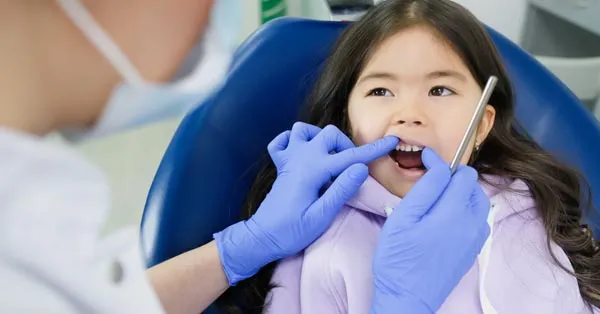Understanding the Unique Nature of Cavities in Children
How Cavities Form Differently in Baby Teeth
Children’s teeth, also known as primary or baby teeth, have a different structure than adult teeth. They are smaller and have thinner enamel, making them more vulnerable to acid attacks caused by plaque and sugary foods. This means cavities can form and spread much faster in baby teeth compared to adult teeth.
Faster Progression of Decay Due to Thinner Enamel
The enamel on baby teeth is significantly thinner, offering less protection against decay. Once a cavity begins, it can quickly reach the inner layers of the tooth, potentially affecting the nerve and causing pain or infection. Without early intervention, this can lead to the need for more complex dental procedures or even extraction.
Common Causes: Diet, Hygiene Habits, and Genetics
Several factors contribute to cavity development in children. High-sugar diets, including juices, candies, and frequent snacking, provide fuel for cavity-causing bacteria. Inconsistent brushing or improper techniques also allow plaque to build up. Genetics may play a role too—some children inherit enamel that is more susceptible to decay.
What Makes Pediatric Dentists Different
Specialized Training in Child-Specific Dental Care
Pediatric dentists complete two to three years of additional training after dental school, focusing exclusively on the dental needs of infants, children, and adolescents. This specialized education equips them with the skills to address childhood dental development, behavioral techniques, and age-appropriate treatment options for common issues like cavities.
Expertise in Treating Cavities in Young and Anxious Patients
Many children experience fear or anxiety during dental visits, especially when treatment is involved. Pediatric dentists are trained in child psychology and behavior management strategies that help create a calm and welcoming environment. From using friendly language to employing distraction techniques or sedation options when needed, they know how to make the experience less intimidating.
Knowledge of Growth, Development, and Baby-to-Adult Tooth Transitions
Treating cavities in kids isn’t just about fixing one tooth—it’s about understanding how that tooth fits into your child’s overall oral development. Pediatric dentists monitor the transition from baby teeth to permanent teeth and ensure that decay doesn’t interfere with normal growth. Their care plans are designed with your child’s future dental health in mind, helping to prevent long-term issues that may arise if cavities are left untreated or improperly managed.
Child-Friendly Tools and Techniques
Use of Smaller Instruments Designed for Children’s Mouths
Pediatric dentists use instruments that are scaled down for smaller mouths, making treatments more precise and comfortable. These specialized tools minimize discomfort during procedures like fillings, cleanings, or cavity removal, ensuring that dental work is gentle yet effective for tiny teeth.
Behavior Management Strategies to Reduce Fear
Managing a child’s anxiety is key to successful treatment. Pediatric dentists are trained in age-appropriate communication and behavior guidance techniques, such as “tell-show-do,” positive reinforcement, and desensitization. These methods help build trust and ease nervousness, making each visit less stressful for both the child and parent.
Pain-Free Treatment Options Like Laser Dentistry and Sedation
Modern pediatric dentistry emphasizes comfort. Techniques like laser dentistry allow for cavity treatment without the need for drills, needles, or anesthesia in many cases. For children who are especially anxious or need more involved procedures, pediatric dentists can safely offer sedation options, such as nitrous oxide (laughing gas) or oral sedation, to keep them relaxed and pain-free.
Customized Treatment Plans for Young Patients
Age-Appropriate Cavity Treatments: Fluoride, Fillings, Crowns
Depending on the severity of the cavity and the child’s age, pediatric dentists use different approaches to treatment. Mild cases may be managed with fluoride treatments to remineralize early decay. For more advanced cavities, tooth-colored fillings or stainless-steel crowns are commonly used to restore function and protect the tooth. Each treatment is tailored to be as minimally invasive and child-friendly as possible.
Considerations for Baby Teeth vs. Permanent Teeth
Not all cavities are treated the same. Pediatric dentists carefully assess whether the affected tooth is a baby tooth that will fall out soon or a permanent tooth that must last a lifetime. In some cases, baby teeth need to be preserved to maintain oral health and proper spacing. In other cases, extraction may be the better option. Pediatric dentists balance short-term comfort with long-term outcomes to choose the most effective path forward.
Focus on Preserving Space for Proper Tooth Alignment
Baby teeth serve a crucial role as space holders for adult teeth. If a baby tooth is lost too early due to untreated decay, surrounding teeth can shift into the empty space, leading to alignment issues later. Pediatric dentists take steps to preserve space or use space maintainers when necessary to ensure your child’s adult teeth erupt properly, reducing the risk of future orthodontic problems.
Creating a Positive Dental Experience
Gentle Communication and a Fun, Welcoming Environment
Pediatric dental offices are designed with kids in mind—from colorful décor and toys in the waiting area to TVs or music during treatment. Pediatric dentists and their teams use age-appropriate language and gentle explanations to make sure kids understand what’s happening without feeling scared. This positive environment helps reduce fear and builds a sense of safety and familiarity.
Importance of Trust and Consistency in Long-Term Oral Health
Developing a trusting relationship between a child and their dentist is key. When kids see the same friendly faces at every visit and know what to expect, they’re more likely to cooperate and return for regular care. That consistency leads to better monitoring, early detection of problems, and ongoing guidance—all essential to maintaining healthy teeth.
How Early Positive Visits Encourage Lifelong Dental Habits
Children who have positive experiences at the dentist from an early age are more likely to adopt good oral hygiene habits and keep up with regular checkups into adulthood. Pediatric dentists help build confidence by making each visit feel safe and rewarding, setting the tone for a healthy attitude toward dental care that lasts a lifetime.
Preventive Guidance Beyond the Chair
Education for Parents on Cavity Prevention
Prevention starts at home, and pediatric dentists empower parents with the knowledge they need to support good oral habits. From explaining proper brushing and flossing techniques to discussing how often and when kids should snack, these professionals provide clear, practical advice that fits into everyday family routines.
Fluoride Use, Sealants, and Diet Tips
Pediatric dentists often recommend fluoride treatments to strengthen enamel and reduce the risk of decay. Dental sealants—thin, protective coatings applied to the grooves of molars—can further shield teeth from food and plaque buildup. Parents also receive personalized dietary guidance, including tips on limiting sugary drinks, choosing tooth-friendly snacks, and reducing the frequency of snacking throughout the day.
Regular Checkups and Personalized Care Strategies
Routine dental visits allow pediatric dentists to monitor your child’s oral development and catch issues early. At each checkup, they tailor care strategies to your child’s age, risk factors, and habits. This might include more frequent cleanings for children prone to cavities or additional interventions for those with braces or special health care needs.



